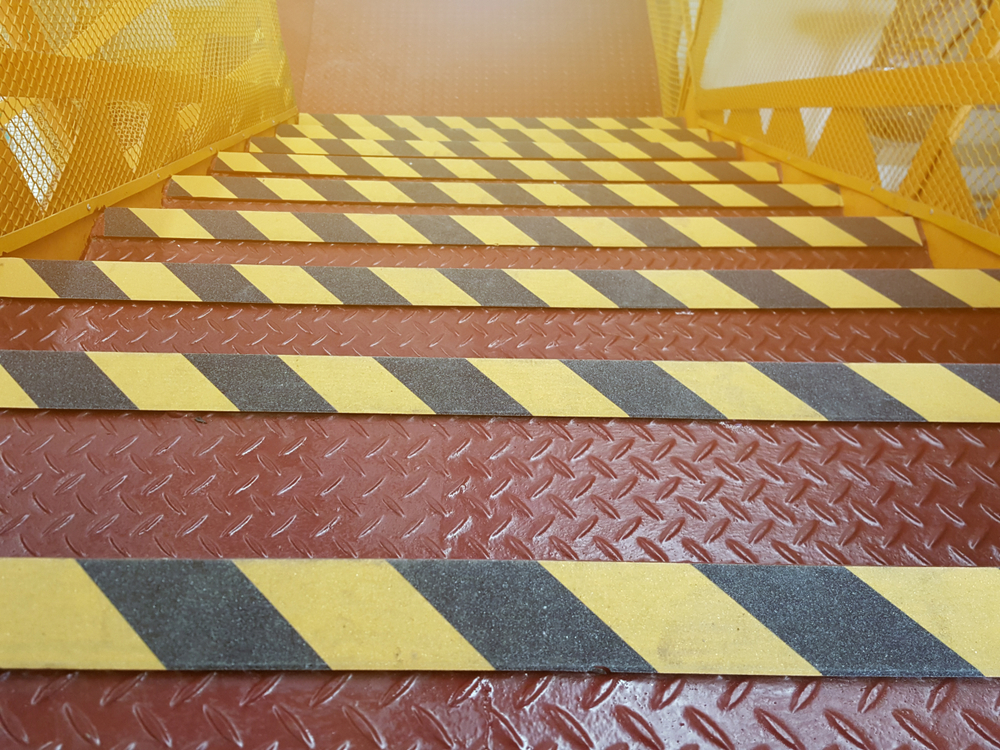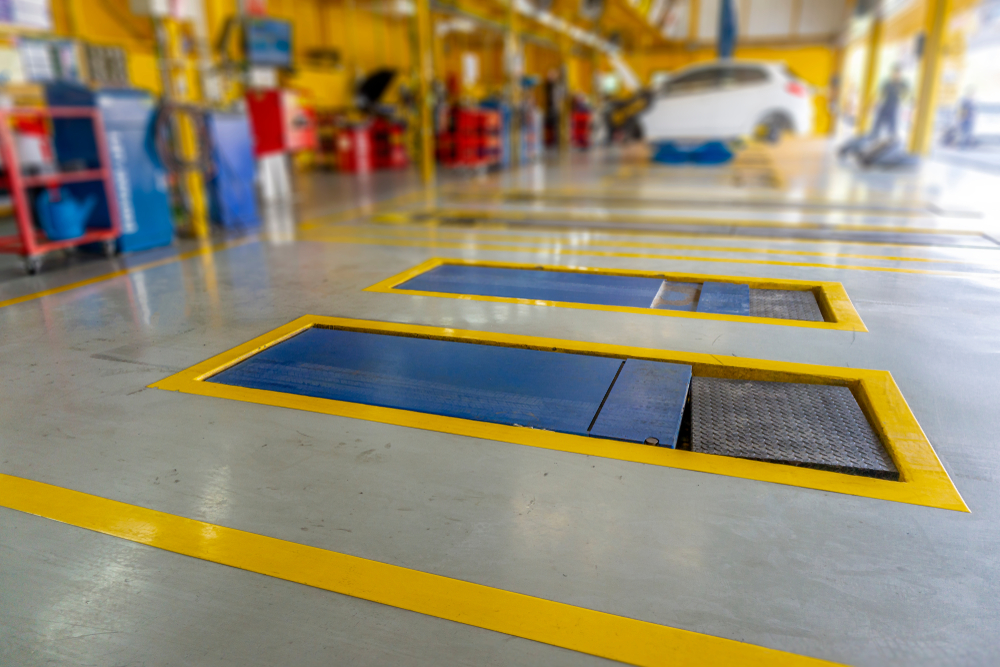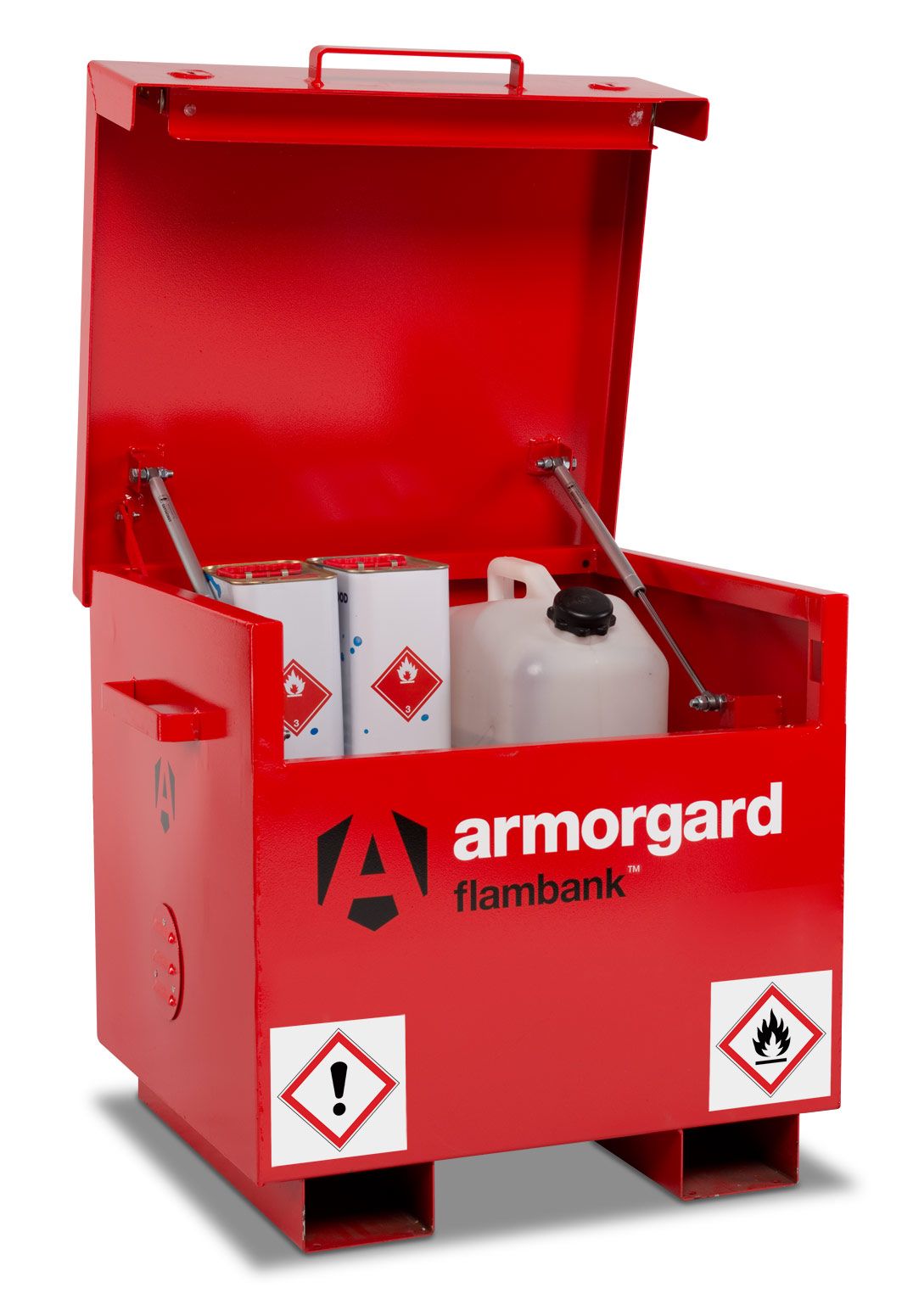When handling hazardous substances in the workplace, it is vital that safety precautions are taken at every stage of the process - not just when the substances are actively involved in the work, but also when they need to be stored and disposed of. Getting this right is vital in protecting the health and wellbeing of people on site, especially for businesses that regularly store waste of this kind.
Disposing of hazardous substances is not as simple as throwing the materials away with the rest of the rubbish. Doing so can put your workers at risk of harm, cause damage to your premises or to the environment, and result in your company being fined for failing to carry out its responsibilities under Control of Substances Hazardous to Health (COSHH) regulations.
Here, the team at SafetyBuyer outlines safe practices for storing, using and disposing of hazardous substances and materials in the workplace, in order to help businesses to handle this crucial part of the COSHH management process correctly.
What kind of substances may require special processes for disposal?
Businesses may need to deal with any number of substances and waste products with the potential to cause harm to workers’ health through contact or exposure, or that can cause environmental damage if handled incorrectly. These hazardous materials may include chemicals and solutions that workers use each day as part of their job responsibilities, or they could be toxic by-products of industrial processes.
Some of the common waste products and chemicals that are most likely to require special waste disposal processes to avoid harm include:
- Asbestos
- Industrial chemicals, such as brake fluid, print toner and cleaning products
- Discarded batteries from electronic equipment
- Fluorescent tubes
- Glues and solvents
- Oil-based paints
- Pesticides
- Industrial oils, such as car oil and other automobile fluids
- Biological and medical waste
- Hazardous waste containers
You can find out more in our guide to the kinds of hazardous substances that are most often found in the workplace, including information on the potential effects of being exposed to these hazardous materials. Failing to properly dispose of hazardous substances can result in severe penalties.
Disposing of hazardous substances and materials correctly
For workplaces that are required to store waste or handle hazardous substances on a regular basis, it is essential that clear policies are put in place to ensure that these materials are disposed of safely, in accordance with all of the relevant COSHH rules and hazardous waste regulations.
This means taking the following steps:
- Classifying the chemicals and products that are being disposed of by your premises to check whether any can be considered hazardous materials. This should be done through a thorough risk assessment process, and with reference to the official government guidance on how to classify different types of waste
- Ensure that hazardous waste and potentially dangerous substances are disposed of separately to your general and recyclable waste. It is illegal to mix hazardous waste with either non-hazardous waste or other types of hazardous waste, so every member of staff should receive training on their responsibilities in this area
- Use suitably robust containers to keep the waste safely stored. These containers should be clearly labelled and covered to keep the stored waste from escaping, and should be waterproof if this is necessary to prevent contaminated run-off
- Arrange for the hazardous waste to be removed from your site by authorised specialist waste disposal companies that are properly certified in the collection, recycling or disposal of hazardous waste. You must ensure that your waste disposal partner is properly certified in accordance with environmental laws, and that the waste is being taken to authorised sites where it can be properly handled
- Fill out the necessary consignment notes and documentation to ensure that the disposal has been properly recorded. This will require you to provide details on the type of waste you are handling, the process through which it was created, the risks associated with the substance and its chemical composition
- Ensure that these records are retained at the premises that created the waste for at least three years, as part of your legal responsibilities under COSHH regulations
By taking all of these steps, you will be able to ensure that your business has done everything that is required to dispose of hazardous substances in a way that is safe and responsible, keeping your workers safe from potential harm and making sure that your organisation has fulfilled all of its environmental responsibilities and commitments to human health.
What can happen if a hazardous substance spills or leaks?
It is vital to avoid spills of hazardous substances in the workplace because they can have a significant negative impact on worker health. Businesses have an obligation to protect workers and may be held legally responsible for accidents relating to dangerous substances if they have failed to put appropriate safety measures in place.
Some of the most common causes of spills in the workplace include:
- Human error: This can include improper handling of materials, failure to follow procedures, lack of training, or carelessness. An organisation must provide training to any workers whose responsibilities involve working with hazardous substances, along with any necessary personal protective equipment - otherwise, the company may be found liable for any accidents that take place.
- Equipment failure: Machinery or equipment used to store or handle hazardous substances can malfunction or break down, resulting in a spill. For this reason, it is vital to use cabinets and other storage solutions that are compliant with Control of Substances Hazardous to Health regulations.
- Neglect of safety procedures: If proper safety protocols are not followed (or have not been implemented), such as not properly sealing containers or not maintaining equipment, spills can occur. One of the best practices for controlling hazardous substances is to clearly display safety information in the area where these materials are stored. In fact, this is a legal requirement in some jurisdictions.
- Storage issues: Overcrowding, inappropriate stacking, or inadequate containment can lead to spills. Storing hazardous substances according to the manufacturer's instructions is another vital way to prevent accidents - for example, some products need to be stored separately or there is a much greater risk of harm. Clear labelling, safety data sheets and other safety precautions can ensure that products are stored correctly. You should also account for the storage of these chemicals when you plan a project, to ensure that you allocate enough space to store them safely.
This is serious because of the health effects that exposure to a hazardous substance can cause. These include:
- Inhalation: Breathing in hazardous substances can cause respiratory issues such as asthma, pneumonia, or even lung cancer.
- Skin contact: Direct contact can lead to burns, rashes, or other skin diseases. Some substances can even be absorbed through the skin and cause internal damage.
- Ingestion: Accidental swallowing of hazardous substances can cause poisoning and damage to internal organs.
- Eye exposure: Splashes can cause severe eye injuries, including blindness.
- Chronic health conditions: Long-term exposure can lead to chronic health issues like cancer, neurological disorders, liver and kidney damage, reproductive disorders, and more.
As an employer, you may be found liable for any of these conditions and be forced to pay compensation to workers if you do not take appropriate steps to mitigate the risk of these accidents.
A good way to minimise risk is to investigate whether or not you can replace any hazardous substances used in your work with safer alternatives. There are several resources provided by the UK's Health and Safety Executive that can help you to develop safer practices and reduce your reliance on any particular hazardous substance in favour of a less-harmful substance. Failure to do so can mean that a business is legally liable for any accidents that occur as a result.
Responding to emergencies involving hazardous materials
In the event that there is a spill, a workplace must have effective control measures in place to contain the spill and prevent harm to workers. Your priorities should be to control exposure and clean the spill as quickly as possible.
As such, you should provide spill kits and cleaning products in places where you store hazardous substances. You should ensure that you have options that are clearly labelled and effective for every type of chemical you need to store. Workers who may encounter spills or who are responsible for controlling substances hazardous to health should be trained on how to use the equipment you have provided to control and clean up spills before they start to cause serious problems.
Choosing the right equipment for storage - for example, COSHH-certified cabinets with high-capacity sumps that are able to contain spills - can give you an advantage in this area and further serve to mitigate risk. It is vital to consider risk alongside your requirements if you are considering storing hazardous substances in a place of work. You may also need to provide personal protective equipment for any workers who are responsible for handling these substances, and ensure that this meets any legal requirements.
Finally, you should also carry out risk assessments before you begin to store chemicals on site, whenever you change your procedures or introduce new substances into your processes, and on a regular basis generally, to identify any risks to health and prevent injury to workers.
Find out more
For a comprehensive range of products and solutions to help your business with its hazardous waste disposal, browse the full range of COSHH management and spill control solutions at SafetyBuyer. If you have questions about finding the right product for your needs, give us a call today on 0800 043 1061.
FAQs
1. What are the legal requirements for disposing of a hazardous substance in the workplace?
In the UK, the primary legal framework governing the disposal of hazardous substances is the Control of Substances Hazardous to Health (COSHH) regulations. These regulations mandate businesses to conduct thorough risk assessments, classify hazardous substances, ensure proper storage, and maintain detailed records of disposal for at least three years. Non-compliance can result in substantial penalties.
2. Can I dispose of a hazardous substance along with regular waste?
No, hazardous substances must be segregated from regular waste. Mixing them is not only illegal but can pose significant health and environmental risks. It's essential to have separate containers as storing hazardous substances means you must consider measures to prevent contamination.
3. Are there specific regulations or guidelines for disposing of different types of hazardous substances?
Depending on the nature of the hazardous substance, there might be specific guidelines. For instance, asbestos, industrial chemicals, and biological waste each have distinct disposal procedures. It's crucial to refer to official government guidance or industry-specific standards to ensure you comply with the law..
4. Can I pour a hazardous substance down the drain or flush them down the toilet?
You should never pour hazardous substances down the drain as it can contaminate water sources, harm aquatic life, and pose health risks to communities. Doing so can also lead to legal repercussions. Always consult disposal guidelines or seek expert advice.
5. Do I need to store hazardous substances before disposing of them, and if so, how?
Yes, proper storage is essential before disposal. Hazardous substances should be kept in robust, clearly labelled containers that are resistant to leaks or spills. If the substance is volatile or reactive, it might require special storage conditions like temperature control.
6. What are the potential risks and consequences of improper disposal of hazardous substances in the workplace?
Improper disposal can lead to health issues for employees, contamination of the environment, legal penalties, and potential damage to a company's reputation. In severe cases, mishandling can result in catastrophic events like explosions or toxic exposure.
7. Are there any training or certification requirements for employees handling hazardous substances and disposal?
Employees dealing with hazardous substances should undergo specific training sessions to understand the risks, proper handling, storage, and disposal procedures. Certifications might be required for specialised roles or industries.
8. What documentation should I maintain regarding the disposal of hazardous substances in the workplace?
Detailed records, including consignment notes, which detail the type of waste, its origin, quantity, and disposal method, should be maintained. These records serve as proof of compliance and should be kept for a minimum of three years.
9. Are there specific procedures or precautions I should follow when transporting hazardous substances for disposal?
Transporting hazardous substances requires adherence to specific guidelines, including using appropriate containers, labelling, and ensuring the vehicle used meets safety standards. It's also essential to notify the disposal facility in advance.
10. Can I recycle or reuse certain hazardous substances in the workplace?
Some hazardous substances can be recycled or reused, but it's crucial to ensure that the process is safe and compliant with regulations. For instance, certain industrial chemicals can be treated and repurposed, but always consult guidelines.
11. What should I do if there is an accidental spill or release of a hazardous substance during disposal?
Immediate containment is crucial. Use spill kits or containment measures, evacuate the area if necessary, and notify relevant authorities. It's also essential to review and update effective control measures to prevent future incidents.
12. Are there any reporting obligations or procedures in the event of an incident involving the disposing of hazardous substances and materials?
Yes, any significant spill, release, or incident related to substances hazardous to health must be reported to the relevant authorities, such as the Environment Agency. This ensures proper oversight and helps in mitigating environmental or health impacts.
13. Can I seek assistance or guidance from external agencies or experts for proper disposal in the workplace?
Consulting with certified waste disposal companies, environmental experts, or industry associations can provide valuable insights and ensure that disposal practices are up to standard. Controlling hazardous substances is made easy with COSHH cabinets.
14. Are there any industry-specific regulations or guidelines for disposing of hazardous substances?
- Certain industries, like pharmaceuticals, petrochemicals or manufacturing, might have specific guidelines or standards for disposing of hazardous substances. It's essential to be aware of and comply with these industry-specific regulations.
By keeping to these guidelines and best practices, businesses can ensure the safe and responsible disposal of hazardous substances and materials, safeguarding both the environment and public health.
 Over 12,000
Over 12,000  Simple no quibble
Simple no quibble  Prompt dispatch &
Prompt dispatch &  UK Mainland Delivery
UK Mainland Delivery 












